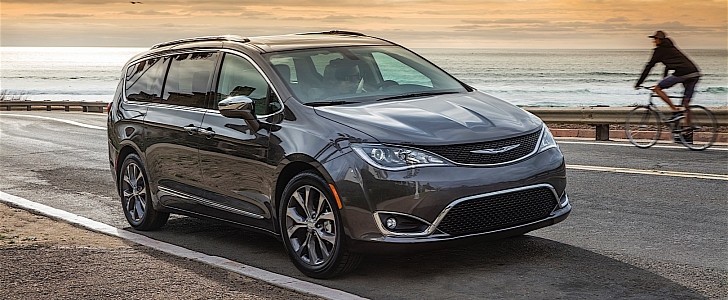The Office of Defects Investigation has received 40 complaints alleging stalling or the loss of motive power in the 2019 through 2021 model year Chrysler Pacifica PHEV. A review of the complaints noted that most incidents occurred at speeds greater than 25 miles per hour (more than 40 kilometers per hour), resulting in the disablement of the minivan.
From late 2021 onward, the federal watchdog observed a significant increase in reports alleging loss of motive power involving newer vehicles. The incidents in question occurred at highway speeds, requiring the plug-in minivan to be towed to the nearest dealership. Customers allege that the loss of motive power was accompanied by a charging fault warning message.
The ODI, therefore, couldn’t sit idly and hope for these incidents to die down. The Office of Defects Investigation has opened a preliminary evaluation into this matter to assess the scope, frequency, root cause, and safety consequences of the alleged defect affecting the plug-in minivan.
“Driving on the interstate and lost all forward drive,” reads complaint number 11476105. “Car said service charging system and would not recover. Got towed to dealer, troubleshot, and replaced the transmission.”
“The car stalled out while driving at 35 mph. Lost all propulsive power. Indicated service hybrid system and shift to park errors on multi-function display,” reads complaint number 11473773. “Was able to safely coast to the shoulder and stop. The car would not move again, reading the same errors even after shifting to park and attempting to restart. If this had occurred on a multi-lane highway, it would have been extremely dangerous."
Whatever may be the root cause for these terrifying failures, there’s no denying that Chrysler could’ve used a better transmission. Although Toyota is the unquestionable leader in CVTs and eCVTs, the electronically variable transmission of the Pacifca PHEV was developed in conjunction with Ricardo based on designs from Ricardo and Timken. The SIEVT is currently assembled at the Tipton Transmission plant, some of the internals come from the Kokomo Transmission plant, the electronics are produced by Magnetti Marelli, and the high-voltage battery is supplied by LG Chem.
The ODI, therefore, couldn’t sit idly and hope for these incidents to die down. The Office of Defects Investigation has opened a preliminary evaluation into this matter to assess the scope, frequency, root cause, and safety consequences of the alleged defect affecting the plug-in minivan.
“Driving on the interstate and lost all forward drive,” reads complaint number 11476105. “Car said service charging system and would not recover. Got towed to dealer, troubleshot, and replaced the transmission.”
“The car stalled out while driving at 35 mph. Lost all propulsive power. Indicated service hybrid system and shift to park errors on multi-function display,” reads complaint number 11473773. “Was able to safely coast to the shoulder and stop. The car would not move again, reading the same errors even after shifting to park and attempting to restart. If this had occurred on a multi-lane highway, it would have been extremely dangerous."
Whatever may be the root cause for these terrifying failures, there’s no denying that Chrysler could’ve used a better transmission. Although Toyota is the unquestionable leader in CVTs and eCVTs, the electronically variable transmission of the Pacifca PHEV was developed in conjunction with Ricardo based on designs from Ricardo and Timken. The SIEVT is currently assembled at the Tipton Transmission plant, some of the internals come from the Kokomo Transmission plant, the electronics are produced by Magnetti Marelli, and the high-voltage battery is supplied by LG Chem.




























































